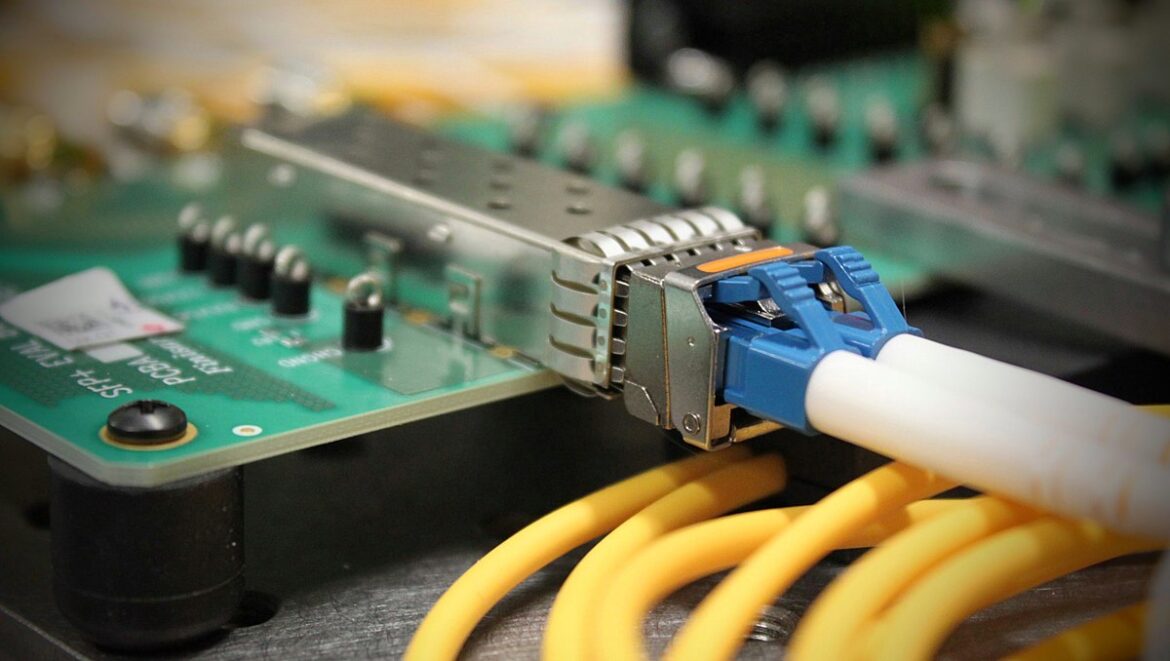Understanding Transceivers: SFP, SFP+, QSFP28, and Their Role in Network Switches
Transceivers are essential to contemporary networking systems because they make data transmission and reception possible over networks. The several transceiver kinds, including SFP, SFP+, and QSFP28, as well as their importance in network switches, will be covered in this article.
Network administrators and other professionals creating and operating network systems must comprehend these components.
SFP Transceiver, short for Small Form-Factor Pluggable
Networking equipment frequently uses the Small Form-Factor Pluggable (SFP) transceiver, a small, hot-swappable optical module. Fibre optic and copper cables are supported by SFP transceivers, providing flexibility and scalability in network designs. They are appropriate for a variety of network applications because they offer a range of data rates, including Fast Ethernet, Gigabit Ethernet, and 10 Gigabit Ethernet.
SFP transceivers may be quickly upgraded and maintained because they are simple to install and replace. Their tiny size makes high-density deployment possible, maximizing the available space in network switches. In order to meet the needs of various networks, SFP modules can offer a variety of transmission distances, including short-reach, long-reach, and extended-reach.
Superior SFP+ Transceiver:
The Enhanced Small Form-Factor Pluggable (SFP+) transceiver delivers faster data rates and improved performance, building on the success of SFP. Because SFP+ modules are backward-compatible with SFP slots and offer 10 Gigabit Ethernet, they can be easily integrated into current infrastructures.
SFP+ transceivers allow network managers to enhance bandwidth capacity without replacing entire network switches because they have the same small form factor as SFP. In data centers, business networks, and telecommunications settings where high-speed connectivity is crucial, these transceivers are frequently used.
SFP+ transceivers offer a range of alternatives for the transmission medium, such as direct-attach copper cables and fiber optic cables. Compared to their predecessors, they have higher signal integrity and use less power, which makes them a desirable option for high-performance networking applications.
Quad Small Form-Factor Pluggable 28 (QSFP28) Transceiver:
In order to fulfill the rising demand for even greater data rates in contemporary networks, the Quad Small Form-Factor Pluggable 28 (QSFP28) transceiver was created. QSFP28 modules provide outstanding performance in data-intensive situations by supporting data rates of 40 Gigabit Ethernet and 100 Gigabit Ethernet.
Parallel optics technology is used by QSFP28 transceivers to allow several optical fibers to send and receive data at the same time. This technique permits a smooth transition to faster network speeds while considerably increasing bandwidth capacity.
Data centers, high-performance computing clusters, and cloud-based applications all frequently make use of these transceivers. Network managers are able to create adaptable and scalable network topologies because of QSFP28 modules’ capabilities for a range of transmission distances.
Transceivers’ Function in Network Switches:
Modern networks are supported by network switches, which link various devices and enable data transfer. In network switches, transceivers like SFP, SFP+, and QSFP28 are crucial because they provide the required interface for network connections.
Network switches can accommodate a variety of media, including copper and fiber optic connections, by employing transceivers. Network managers can adjust to different network requirements, such as physical limits or particular network protocols, thanks to this flexibility.
Transceivers also allow network switches to support a variety of data rates, including Fast Ethernet and 100 Gigabit Ethernet. As network traffic increases, this scalability guarantees that network switches can manage rising bandwidth requirements.
Conclusion:
In contemporary networking systems, transceivers are essential because they allow for the transmission and receiving of data between devices. Compact modules called SFP (Small Form-factor Pluggable) transceivers are used for Ethernet and fiber optic communications. They offer adaptability and scalability, making switching between several network interfaces simple. SFP+ transceivers are frequently utilized for 10 Gigabit Ethernet applications because they provide faster data rates. With the ability to support data speeds of up to 100 Gigabits per second, QSFP28 transceivers go a step further, making them perfect for high-performance data centers. The backbone of a network is made up of network switches, which provide connectivity and control traffic flow between devices. These technologies work together to create the current networking infrastructure that underpins quick and dependable communication in the digital age.




